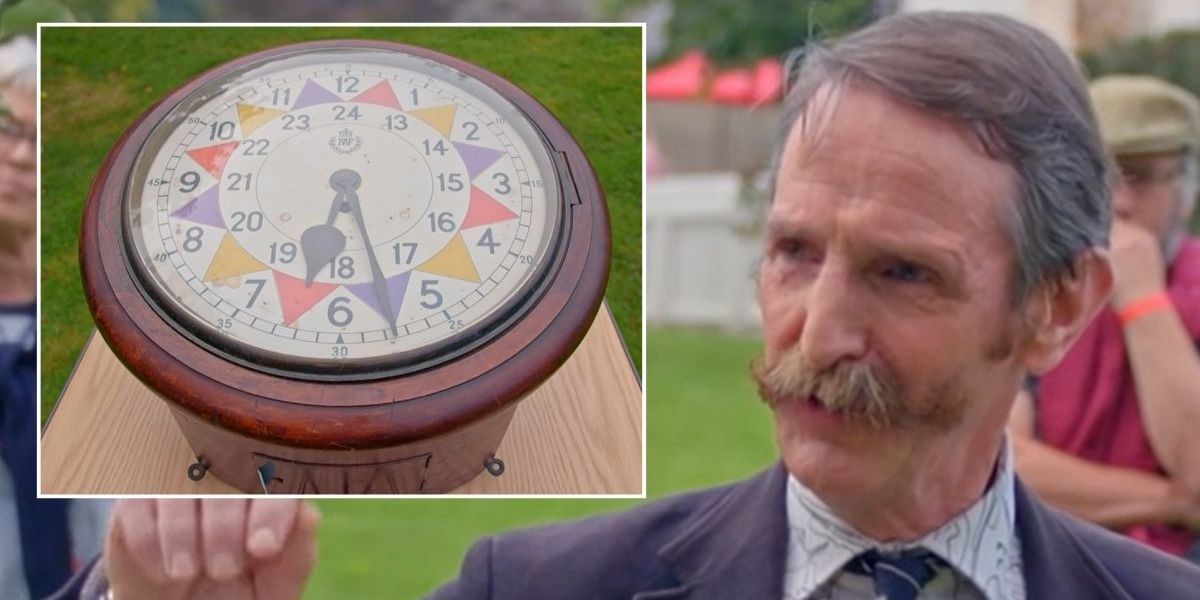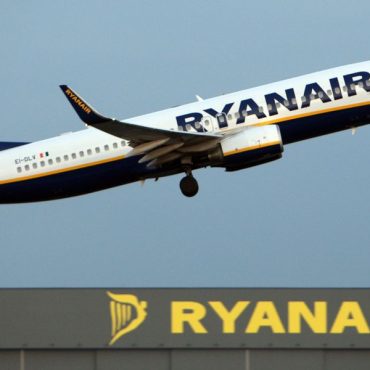Antiques Roadshow expert, Robert Tilney, was left stunned when he was told that a rare RAF sector clock was bought at an auction for just £20.
During tonight’s repeat episode, treasures brought in to be valued include a set of stained-glass windows decorated with mermaids and a piece of costume jewellery found in an antique shop in Australia.
Elsewhere, the experts also get their hands on an ornately decorated mandolin found concealed in an old cupboard, a device used to make penicillin, a silver milk jug from Kashmir and a huge bell from a Japanese temple.
However, when Tilney came across one guest RAF clock, he asked: “That is a really distinctive clock, so you must know what it is?”
“After I bought it I found out it is an RAF sector clock,” the guest explained, also admitting that he didn’t “clearly” know how it worked.
Smiling, Tilney admitted he would do his best to explain and began: “You must have seen the various wall films and they have the big room, the big map.

Antiques Roadshow’s Robert Tilney delved into the history of the clock
BBC
“And they bring in what’s called incoming plots. So, the Royal Observer Corp, RAF, will spot planes coming and this is where the sector clock comes in.
“Wherever the plot is first seen it is the time and wherever the minute hand is on, in this case, it’s on the purple, that becomes a purple plot at whatever the time is.
“That is then put on the map board, you see them with the magnetic rakes pushing. The brilliant thing about the sector clock is that it goes down as a purple plot and whatever the time is, so you can always track where plots are.
“It was part of the system called ground-controlled interception and it enabled the RAF squadrons up in time, it was vastly fast.

The clock was used before the Cold War
BBC
“Combination of radar, clocks, royal observer corp and it sped up the response for plots coming in, it was very clever.
“They kept using it until the Cold War when computer systems came over. You know these are very rare? So where did you get hold of it?”
The guest laughed and revealed: “My employers in 1973 were clearing offices and they auctioned off all the surplus items in that building.”
Wondering whether the guest was just lucky or paid a pretty penny for it, Tilney asked for the price, in which the guest admitted: “I think it was £20.”

The guest was left impressed with the staggering value if he was to put it up for auction
BBC
Stunned, Tilney exclaimed: “£20! Ok… they are hugely collectable. Now, if you decided at auction to think ‘ooh I really want one of those’, you would have to start the bidding at £4,000.”
“That’s fabulous. That’s great,” the guest said with a stunned but happy look on his face, leaving Tilney to add: “And that’s start it might go higher.”
“Right, the higher the better if it ever gets to auction,” the guest joked before Tilney reminded him: “It is so iconic of the early war days.”














Post comments (0)